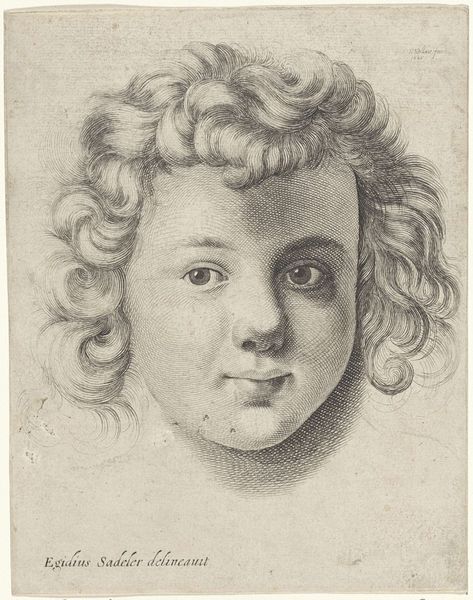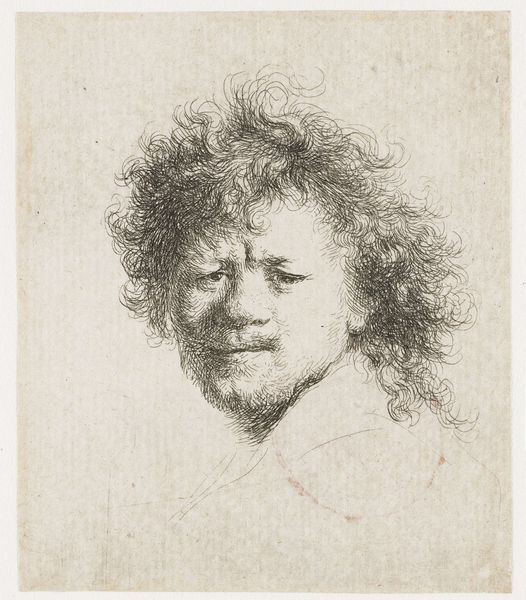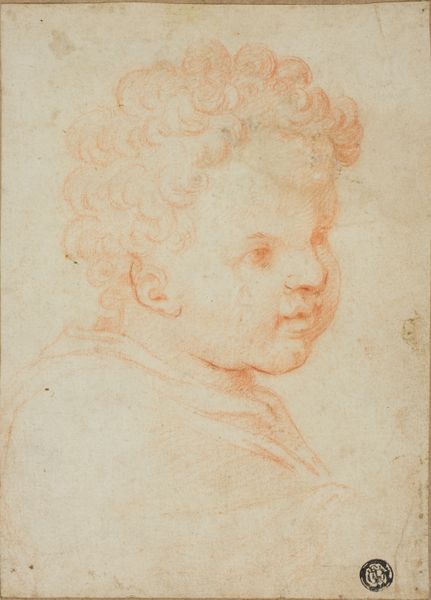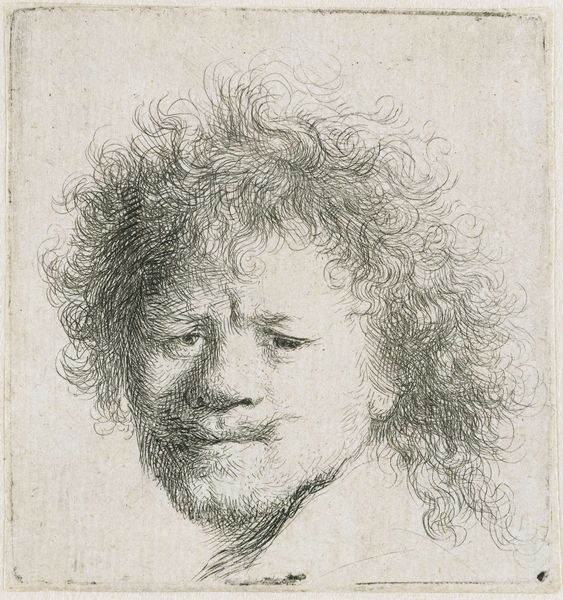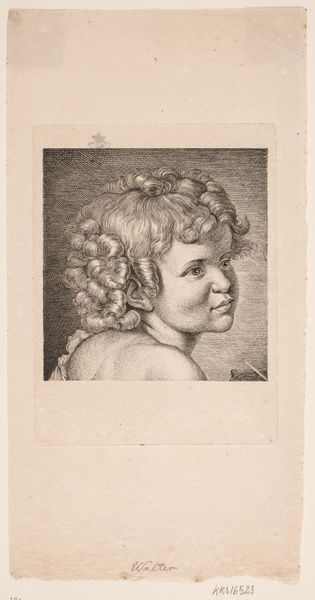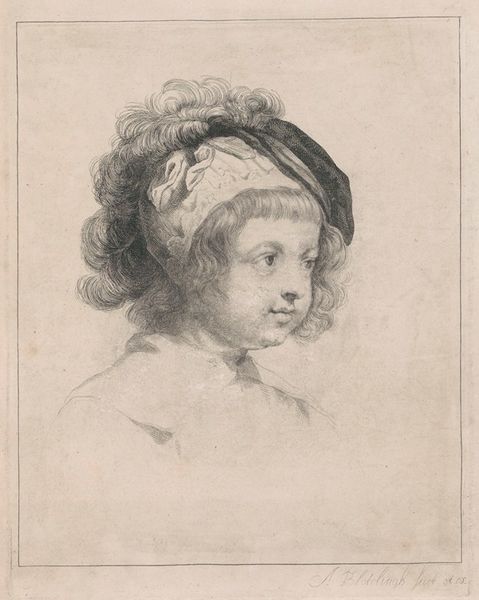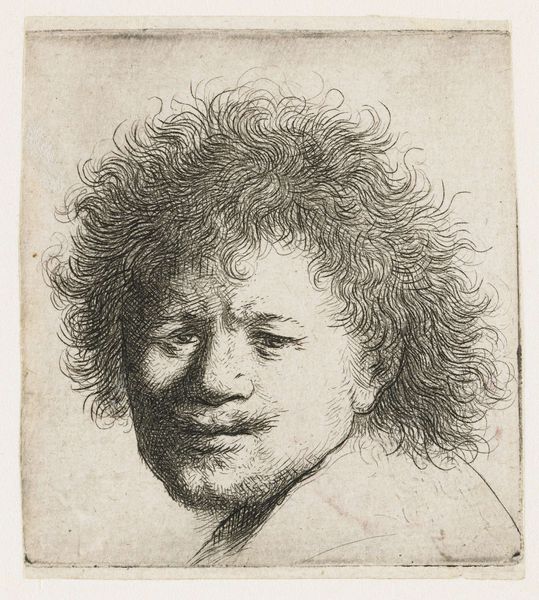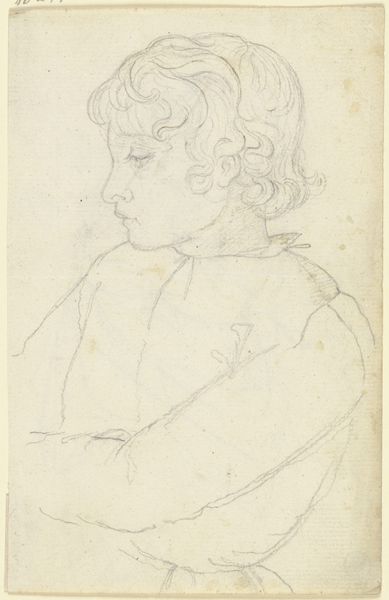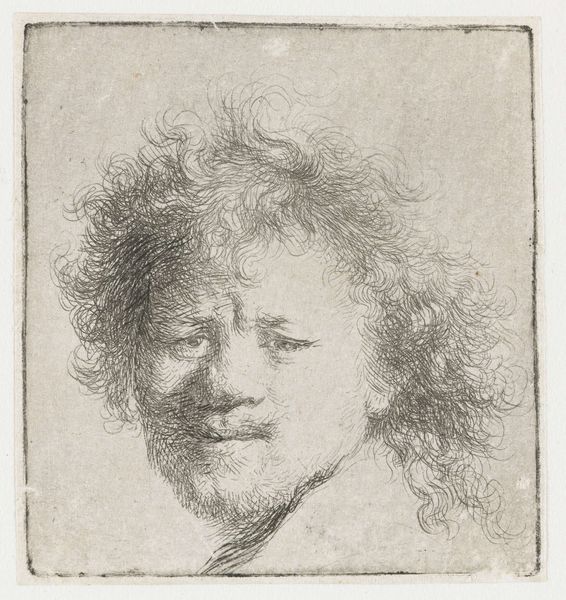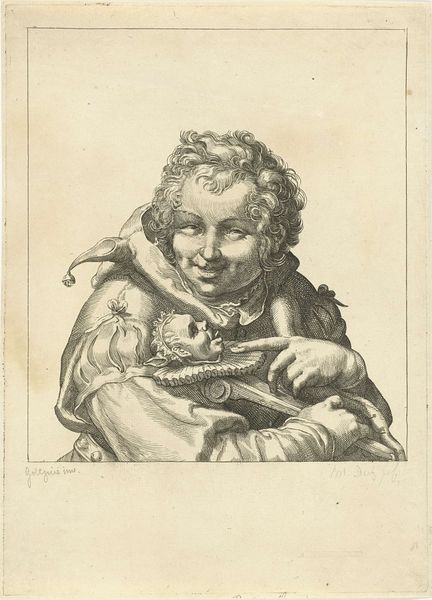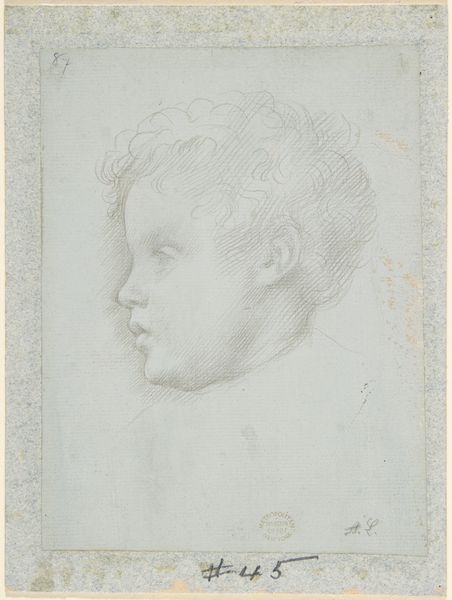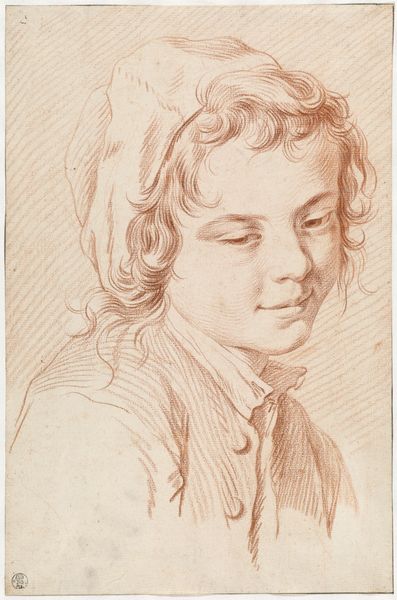
drawing, pencil
#
portrait
#
drawing
#
baroque
#
caricature
#
figuration
#
pencil drawing
#
intimism
#
pencil
#
line
#
portrait drawing
Dimensions: height 206 mm, width 155 mm
Copyright: Rijks Museum: Open Domain
Curator: Here we have "Portret van een jongen met krullend haar" a pencil drawing by François Morellon La Cave, dating to between 1706 and 1768. It’s currently held at the Rijksmuseum. Editor: My initial thought is that this work seems rather intimate, almost as if the artist captured a candid moment. The softness of the pencil and the boy's expression create a sense of gentle curiosity. Curator: Indeed, the Baroque style, which emphasized drama and grandeur, takes on a surprisingly tender form here. Portraits, of course, served to immortalize and often to aggrandize the subject, but La Cave’s focus seems less on status and more on capturing a specific likeness, a personality. Editor: And the use of the pencil drawing, rather than say, oil on canvas, suggests a more accessible, immediate representation. Was it perhaps a study for a larger work, or a more personal project, outside formal commissions? Curator: It’s difficult to say definitively, but I lean towards the latter. The simple line framing the head creates a sense of containment, further drawing our focus to the boy’s face and playful, somewhat sly smile. This simplicity seems to speak to the artistic freedom inherent in intimate pieces. Editor: The "curly hair" in the title becomes almost a symbolic halo; an indicator of youthful innocence, almost cherubic, further augmented with these full cheeks and puckered smile, as if keeping a juicy secret. What do you think he is dreaming about? Curator: You know, in this period, portraiture was deeply intertwined with notions of identity and societal expectations. In that context, his barely-there smile could almost read as subversion or rebellion against imposed decorum, yet softened and humanized by those charming ringlets of his hair. Editor: That’s fascinating. I wonder how this image circulated. Would it have been for private family viewing only? The subtle gradations and detail seem almost too sophisticated for mere private indulgence, no? Curator: Possibly. Considering the prevalence of printed portraits, there is no doubt about the likelihood of this drawing serving as a reference, albeit for a smaller, more discerning audience. Editor: This discussion has highlighted, at least for me, the nuanced play between the intimate and formal portraiture. I never cease to be amazed at what images carry over time. Curator: It certainly offers a lovely invitation to think about not only artistic intention but also reception—how art circulates and touches people in myriad ways throughout its history.
Comments
No comments
Be the first to comment and join the conversation on the ultimate creative platform.
